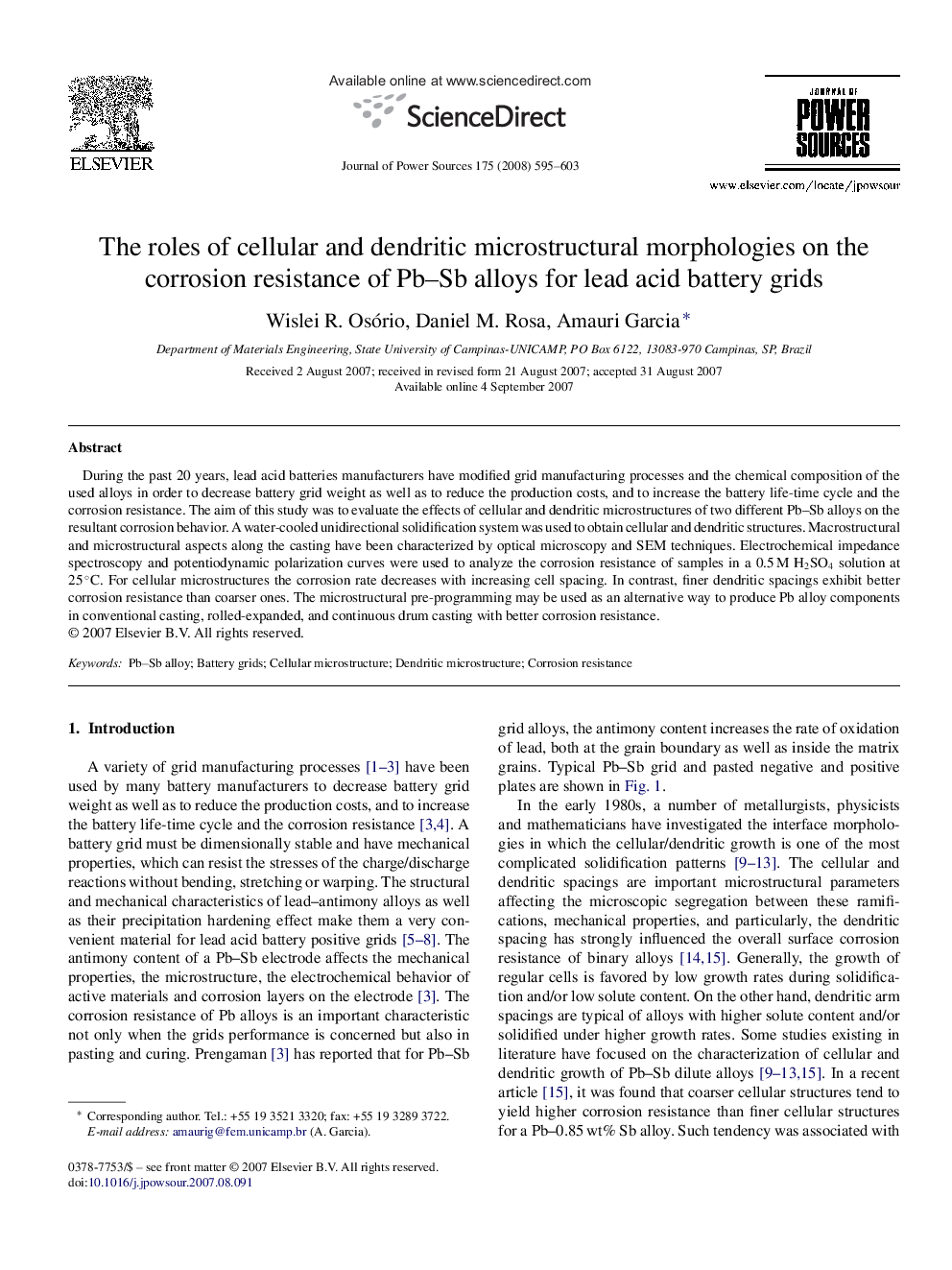| Article ID | Journal | Published Year | Pages | File Type |
|---|---|---|---|---|
| 1294823 | Journal of Power Sources | 2008 | 9 Pages |
During the past 20 years, lead acid batteries manufacturers have modified grid manufacturing processes and the chemical composition of the used alloys in order to decrease battery grid weight as well as to reduce the production costs, and to increase the battery life-time cycle and the corrosion resistance. The aim of this study was to evaluate the effects of cellular and dendritic microstructures of two different Pb–Sb alloys on the resultant corrosion behavior. A water-cooled unidirectional solidification system was used to obtain cellular and dendritic structures. Macrostructural and microstructural aspects along the casting have been characterized by optical microscopy and SEM techniques. Electrochemical impedance spectroscopy and potentiodynamic polarization curves were used to analyze the corrosion resistance of samples in a 0.5 M H2SO4 solution at 25 °C. For cellular microstructures the corrosion rate decreases with increasing cell spacing. In contrast, finer dendritic spacings exhibit better corrosion resistance than coarser ones. The microstructural pre-programming may be used as an alternative way to produce Pb alloy components in conventional casting, rolled-expanded, and continuous drum casting with better corrosion resistance.
